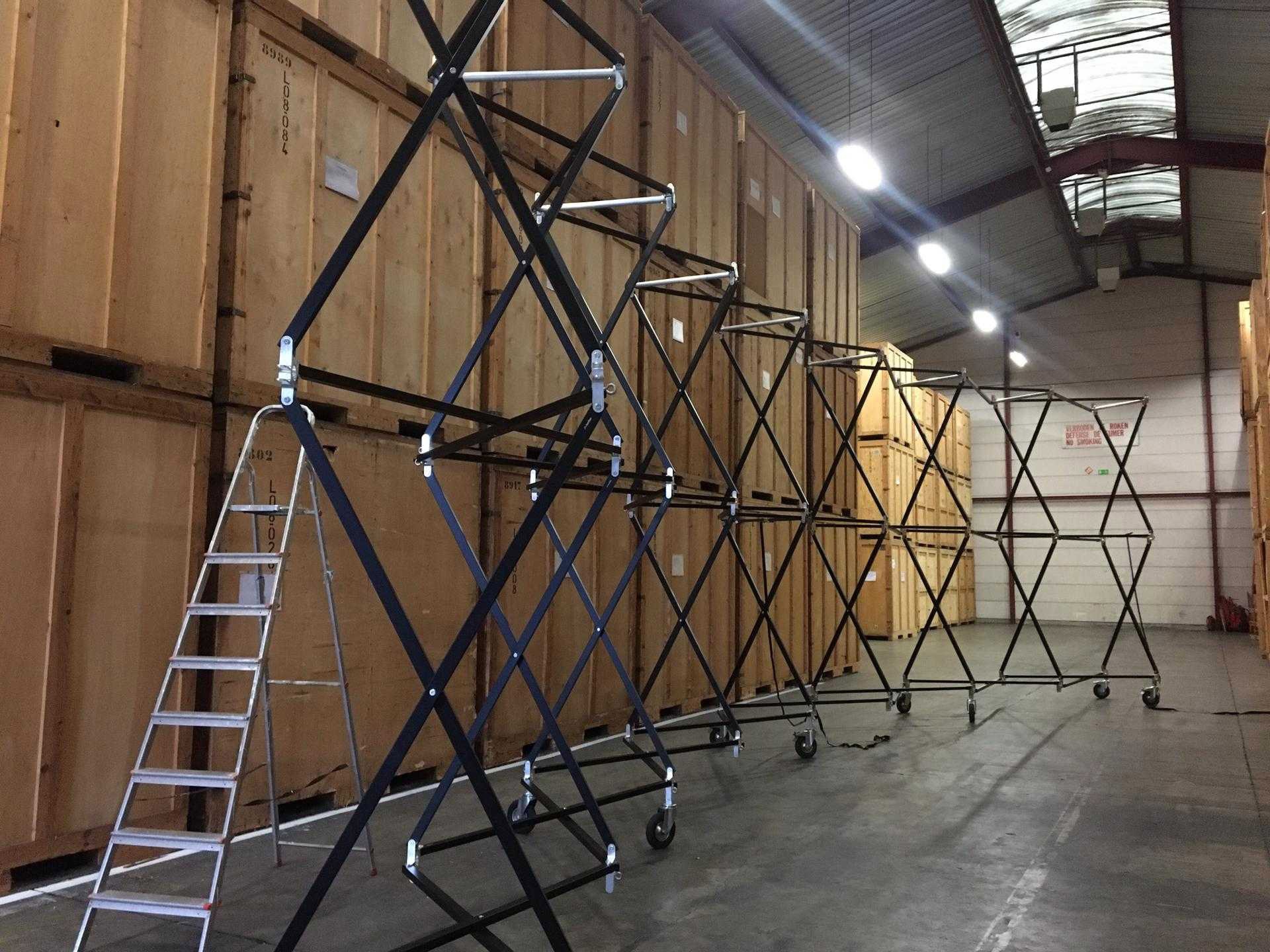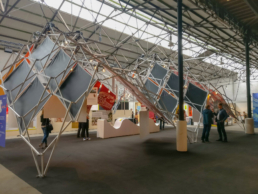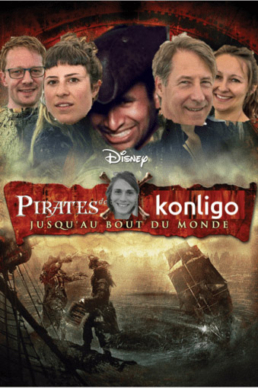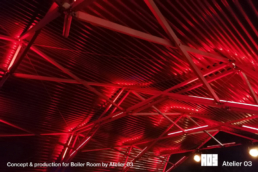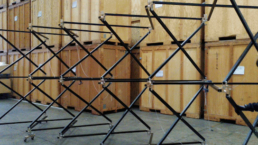De nieuwe trend in beursstands
Elk jaar vinden over de hele wereld tienduizenden conferenties en vakbeurzen plaats. Samen trekken deze 31.000 beurzen meer dan 4,4 miljoen bedrijven aan die hun producten en diensten aan 260 miljoen bezoekers tonen.
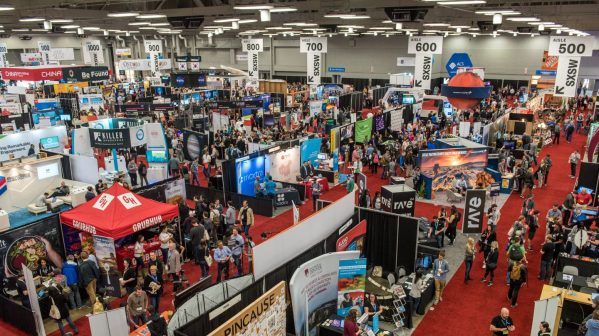
Een overweldigende meerderheid van deze beurzen (80%) zijn business-to-business-evenementen die twee tot drie dagen duren. Een typische business-to-business beurs vergt drie tot vier dagen voorbereiding en één tot twee dagen afbouw. Met andere woorden, het proces van het opbouwen en afbreken van een business-to-business beurs is dubbel zo lang als de eigenlijke duur van de beurs.
Het budget dat aan de infrastructuur voor deze beurzen - hoofdzakelijk stands - wordt besteed, wordt op 60 miljard euro geraamd, of gemiddeld 2 miljoen euro per beurs.
In vergelijking met beurzen is de wereld van business-to-consumer festivals en evenementen zuinig. Jaarlijks worden wereldwijd ruwweg 200.000 openluchtevenementen georganiseerd voor een totaal budget van 20 miljard euro. Dat betekent dat er per evenement 30.000 euro wordt uitgegeven aan outdoor infrastructuur.
Wat verklaart deze duizelingwekkende, miljoenen euro's verschil in budget? Organisatoren van openluchtfestivals en -evenementen willen herinneringen en zichtbaarheid creëren voor een bedrijf, en dat gaat meestal om business-to-consumer communicatie. Voor de beursindustrie is het doel het sluiten van zakelijke deals en dan is het de moeite waard om hier veel geld aan uit te geven.
Stands die de illusie van permanentie bieden
Elke beursstandhouder wil opvallen en indruk maken op huidige en potentiële klanten met een unieke, opvallende structuur. Tegelijk wil bijna elke exposant een sfeer creëren die allesbehalve vluchtig aanvoelt. Ze willen een stand die de illusie van duurzaamheid biedt en bezoekers de indruk geeft dat ze in een echte winkel staan.
Maar deze nadruk op duurzaamheid is niet goedkoop. Honderden mensen zijn nodig om de beursstands te bouwen. Om een schijnbaar permanente uitstalling te creëren, moeten de arbeiders tientallen houten panelen bepleisteren en schilderen en bekledingen gebruiken om het geraamte van de stands te verbergen. Dit is de belangrijkste reden waarom beursstands zo'n lange installatietijd en hoge kostprijs hebben.
Dit hoge prijskaartje betekent ook dat standbouwers onder druk staan om de arbeidskosten zo laag mogelijk te houden. Velen van hen huren bijvoorbeeld busladingen buitenlandse arbeidskrachten, vaak uit Oost-Europese landen, in en brengen die naar België om de stands op te bouwen en af te breken. Zodra de klus geklaard is, worden deze arbeiders terug naar hun thuisland gependeld.
Sustainable is the new black
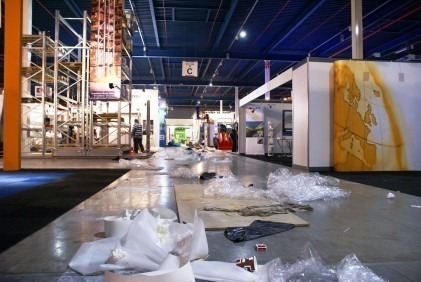
Maar de berg afval die deze 31.000 beurzen opleveren, is misschien nog wel het meest verontrustend. Omdat het makkelijker is om alle gebruikte materialen weg te gooien dan ze op te slaan en te hergebruiken, worden bij elke beurs tonnen houten panelen, wanden, meubels en decoratieve elementen weggegooid. Hergebruik is bovendien niet sexy, want gebruikte materialen geven niet het nieuwe en permanente gevoel waar exposanten naar op zoek zijn.
Met hun robuuste, modulaire aluminium stands beginnen bedrijven als Octanorm, BeMatrix en Aluvision gelukkig een deuk te slaan in de hoeveelheid afval die op beurzen wordt geproduceerd.
Maar als het gaat om de grote in het oog springende structuren die je op de meeste beurzen ziet, is er nog een lange weg te gaan. De nadruk op permanent ogende structuren op tijdelijke evenementen blijft de norm.
Maar waarom? Waarom de structurele elementen van een stand verbergen en ze bedekken met panelen, pleisterwerk en verf? Waarom bezoekers de indruk geven dat de structuur rondom hen permanent is, terwijl een simpele stap buiten de beursstand die illusie meteen verbreekt en hen terugbrengt naar het hier en nu van de beurs? Is dit niet een beetje absurd?
Op andere gebieden van het leven gaan we precies in de tegenovergestelde richting. In digitale marketing bijvoorbeeld hongeren consumenten naar meer authentieke boodschappen. Ze hebben genoeg van gescripte, gelikte advertenties en willen spontanere video's, zonder make-up en filters.
Iets soortgelijks gebeurt in interieurdesign. Meer en meer keren we terug naar gloeilampen, naar gekleurde elektriciteitsdraden en naar ruwere ontwerpen in onze huizen. Dingen die vroeger verborgen waren, worden nu beschouwd als integrale elementen van onze inrichting die het verdienen om gezien te worden.
De wereld van de beursstands evolueert in dezelfde richting. Vooruitstrevende exposanten willen vandaag ruwer ogende tijdelijke ontwerpen die volledig herbruikbaar zijn, want duurzame authenticiteit is het nieuwe zwart. Meer en meer omarmen ze authentiek ogende stands en meer echte business-to-business uitwisselingen.
Bedrijven willen open en transparant communiceren waar ze voor staan, en halfopen stands met ruwere designs gaan hand in hand met deze trend. In plaats van het tijdelijke aspect van een constructie te verdoezelen, maken exposanten dit een centraal onderdeel van het ontwerp en weigeren ze de structurele elementen te verbergen. What you see is what you get.
Hoe maak je een evenement duurzamer?
Elk jaar produceren handels- en consumentenbeurzen 600.000 ton afval. Dat maakt deze sector na de bouwsector de grootste producent van afval.
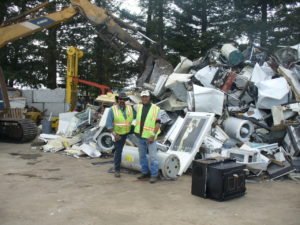
Het grootste deel van dit afval is afkomstig van alle flyers, posters, plastic zakken, catalogussen en gratis monsters die aan de bezoekers worden aangeboden. Daarnaast is er het plastic dat de tapijten beschermt tijdens de montage en het tapijt zelf tijdens en na de demontage, dat in de meeste gevallen nooit zal worden hergebruikt. Het tapijt van stands wordt meestal in bulk verpakt, en het tapijt in de gemeenschappelijke ruimten wordt gerecycleerd. Naarmate de omvang van de beurs toeneemt - en daarmee ook het aandeel van stands met een aangepast ontwerp (of niet-herbruikbare stands) - kan de hoeveelheid gevaarlijk afval en houtresten enorm toenemen.
Natuurlijk zijn er enkele eenvoudige oplossingen voor dit probleem. Aangezien we tegenwoordig in een zeer technologische/digitale wereld leven, zouden sommige hulpmiddelen erg nuttig kunnen zijn bij het oplossen van afvalvermindering op beurzen en tentoonstellingen. De meeste mensen hebben een smartphone en een goede manier om verspilling (vooral van papier) te voorkomen is door een applicatie te ontwikkelen of een QR-code te gebruiken om bijvoorbeeld de gegevens van de klanten te verzamelen, in plaats van tijd, energie en papier te verliezen door dit met de hand te doen. Een digitale catalogus is ook een goed alternatief, en is zelfs nog nuttiger aangezien de klant direct toegang heeft tot veel meer informatie en alle producten makkelijk kan bekijken op een tablet of computer. De exposanten kunnen ook herbruikbare tassen en biologisch afbreekbare, of zelfs herbruikbare, drank- en voedselverpakkingen (borden en bekers van karton of bamboe bijvoorbeeld) ter beschikking stellen.
Waarom papierloos?
Papierloos gaan is een goede manier om afval en kosten te verminderen: je vermijdt het versturen van papieren uitnodigingen en gedrukte reclamemememo's door online evenementpagina's en apps te maken en mensen te registreren via e-mail, sociale netwerken en websites. Bovendien heb je zo sneller toegang tot alle informatie omdat die op elk moment toegankelijk is. Een voorbeeld zijn e-tickets als een zeer goed alternatief voor alle gedrukte tickets: de klanten hebben ze direct op hun telefoon en kunnen hun badge hieraan koppelen. De reclame voor een evenement is ook een grote bron van verspilling, die kan worden vermeden door te communiceren op sociale netwerken en websites en door geen gedrukte documenten te versturen.
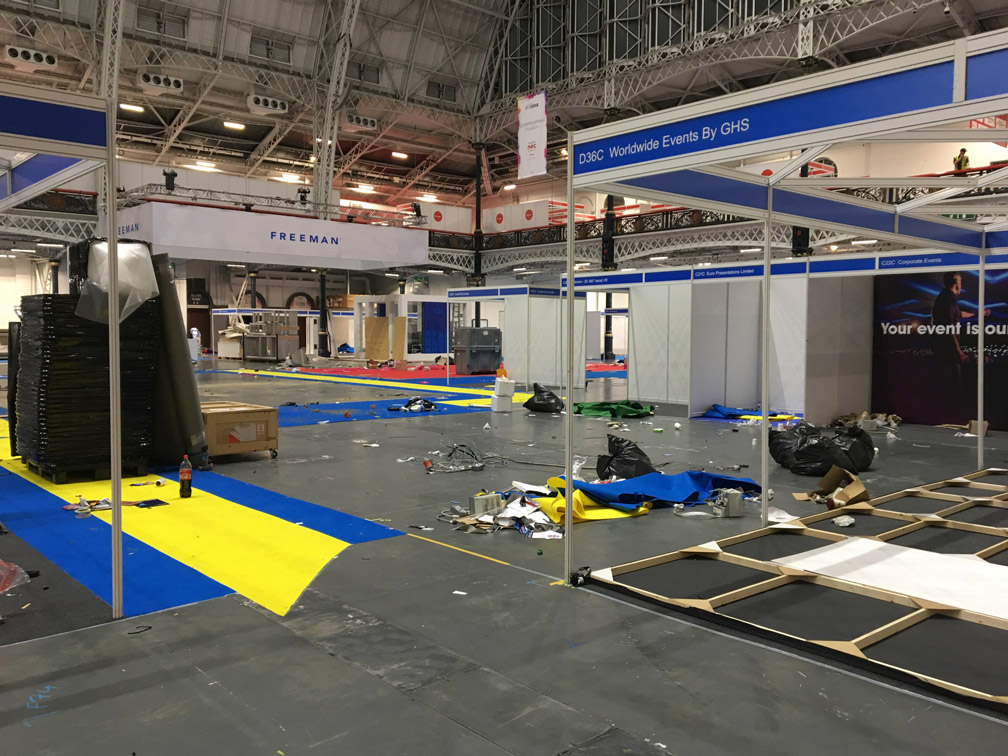
Hoe zit het met het eten?
Door te achterhalen hoeveel mensen er zeker naar het evenement komen, kan men beter anticiperen op voedselhoeveelheden en voedselverspilling vermijden. De restjes en overschotten kunnen ook aan verenigingen of hulporganisaties worden gegeven. Bovendien kan een evenement ook zijn ecologische voetafdruk verbeteren door aangeboden producten zo lokaal mogelijk te houden als het gaat om voedsel of functies voor het evenement.
Wat betreft het plastic afval van stands?
Wat het gebruik van plastiek betreft, verspillen de stands van evenementen heel wat. Ten eerste worden ze in de meeste gevallen maar één keer gebruikt. Dit betekent dat ze nadien worden weggegooid en niet worden hergebruikt. Bovendien verven standbouwers ze vaak direct ter plaatse, wat ook veel chemisch afval veroorzaakt. Conventionele verven zijn niet duurzaam en kunnen leiden tot gezondheidsproblemen omdat ze een aantal giftige ingrediënten bevatten. Natuurlijke verven zijn dan een betere oplossing. Natuurlijke verven bevatten gerecycleerde, natuurlijke of biogebaseerde bestanddelen. Om alle standelementen (structuur, panelen, enz.) in te pakken en te beschermen, gebruiken bedrijven vaak een enorme hoeveelheid plastic dat ze weggooien, in plaats van het te bewaren voor later en opnieuw te gebruiken.
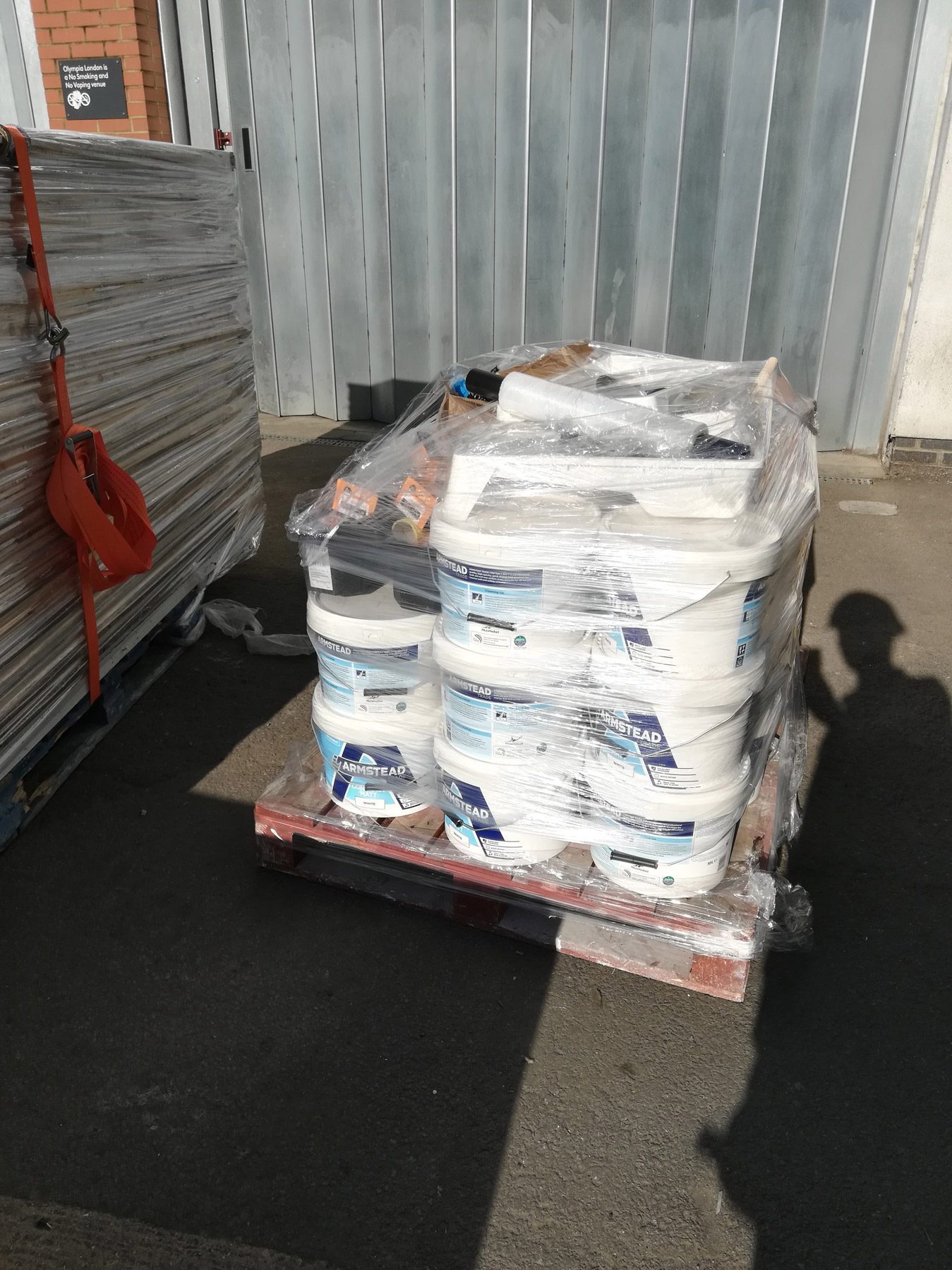
En wat de verlichting betreft?
Voor de verlichting zijn LED-lampen veel beter om energie te besparen, maar het is ook mogelijk om op andere manieren het stroomverbruik te verlagen om energieverspilling te voorkomen. Een wit scherm is een zeer goede investering om alle inhoud digitaal te projecteren en alle panelen en gedrukte posters te vermijden die gewoonlijk worden gebruikt om gegevens en informatie te tonen.
Andere tips?
Een gemakkelijke manier voor een locatie om groener te worden is ervoor te zorgen dat al het afval dat tijdens het evenement wordt gegenereerd, wordt gerecycleerd, of vrijwilligers in te huren die het afval kunnen verzamelen. Bovendien moet al het afval, zoals de structuren, stands en overgebleven producten, worden gedoneerd aan geïnteresseerde organisaties en liefdadigheidsinstellingen. Ten slotte moet een partnerschap met het openbaar vervoer worden ontwikkeld en moet autodelen worden aangemoedigd. Sommige locaties hebben zelfs een internationaal duurzaamheidscertificaat, zoals Manchester Central of ACC Liverpool. Door een van deze opties te kiezen kan de geloofwaardigheid van een duurzaam evenement worden aangetoond.
Kortom, er zijn vele manieren om de koolstofvoetafdruk te verkleinen bij het organiseren van evenementen, en het vergt slechts zeer eenvoudige handelingen om te handelen voor het beste van onze planeet!
Sources:
https://helloendless.com/sustainable-event-trend/
https://www.eventbrite.co.uk/blog/plan-a-green-event-ds00/
https://aushimkoumar.com/2018/12/21/the-new-trend-in-exhibition-stands/
https://www.sciencedirect.com/science/article/pii/S0956053X09000075
https://www.tsnn.com/blog/why-going-green-matters-your-next-tradeshow
https://globalwarmingisreal.com/2012/11/26/5-industries-that-need-way-more-eco-attention/
https://smashhitdisplays.com/blog/trade-show-news/trade-show-industry-creating-most-of-the-worlds-waste
http://www.enviropaedia.com/topic/default.php?topic_id=183
https://www.tickpick.com/a-guide-to-planning-green-events
Hoe is het om bij Konligo te werken ? (artikel in het Engels)
What is it like to work at Konligo? Record from Capucine, Communication and Sustainability Intern
When I first arrived at Konligo, I didn’t know what to expect. For my future career, I have always wanted to work in an NGO, and this was my first internship. I didn’t know anything about the start-up world and was very curious to discover it.
I rapidly found out that since a start-up is basically a project coming to birth, it also means an exciting new adventure. And a new adventure means enthusiastic people, creative minds and most of all, loooads of ideas. In a start-up, there is always room for initiatives and new thoughts are more than welcome. You can just be your true self and give the craziest ideas you can have (not guaranteed they’ll be accepted but hey, if you don’t try, you’ll never know, right?) And if you fail, you can always retry and learn from your mistakes in order to succeed better later. Taking risks is part of the game!
Be yourself, accept the challenges and confront yourself to get out of your comfort zone. Working in a start-up like Konligo is also about working with people full of energy and dynamism, it is taking risks but not being afraid of it. Just like skydiving! If you don’t want to jump out of the plane, you’ll never experience this very unique excitement and this amazing feeling of watching our dear Earth from above (and the terrible feeling of having your cheeks detached from your face, looking like Shrek’s donkey). Even though a start-up means that you don’t know how the next day will look like, it is good to keep moving, to bring changes and new opportunities. It is based on uncertainty regarding the projects, the team members, the financial situation or how you will be able to address the clients’ needs... You really have to involve a lot of your time and energy in the project but hard work always leads to results, either positive or negative, but at least you can learn from them.
A start-up like Konligo is the place where you bring everyone’s skills together, to create relationships and great team working moments. It is about gathering around a common project, doing several (and sometimes super different) tasks, with different (but always creative) people! In Konligo, it is about communicating, pitching your project, getting feedback, working on, logistics, sales but also writing articles or sourcing prospects, in French, in English, in Dutch… Start-ups don’t know boundaries! Working at Konligo made me discover new sectors, new functions and new people from different cultures, backgrounds and working areas.
For me, a start-up is like a baby to raise and to take care of. The “pregnancy time” is super exciting because it is all about planning how will it go, taking care of everything and being ready for the moment to give birth. And then when raising the “kid”, every development step is extremely important! Since everything there are so many things to do, being involved in such a process is a perfect occasion to teach, but also to learn a lot, from everyone, everything and every kind of situation. It is also the opportunity for “the family members” involved to discover new skills, to confront themselves during hard situations, having ups and downs but this is also part of life! Even struggling times can be appreciated because it is a challenge to overcome and once it’s done, it makes the efforts even more valuable.
So working for like Konligo is to me a unique experience that brings lots of responsibilities, risks to take, opportunities and opens some doors to new people, new discoveries and new adventures!
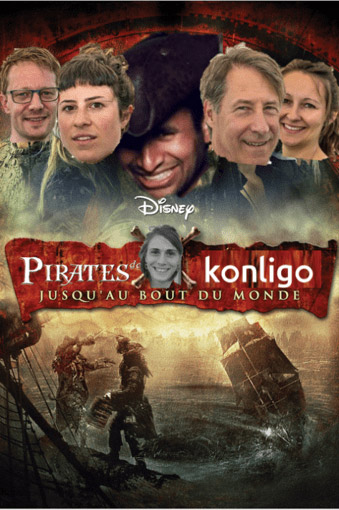
Een duurzame business model ? (artikel in het Engels)
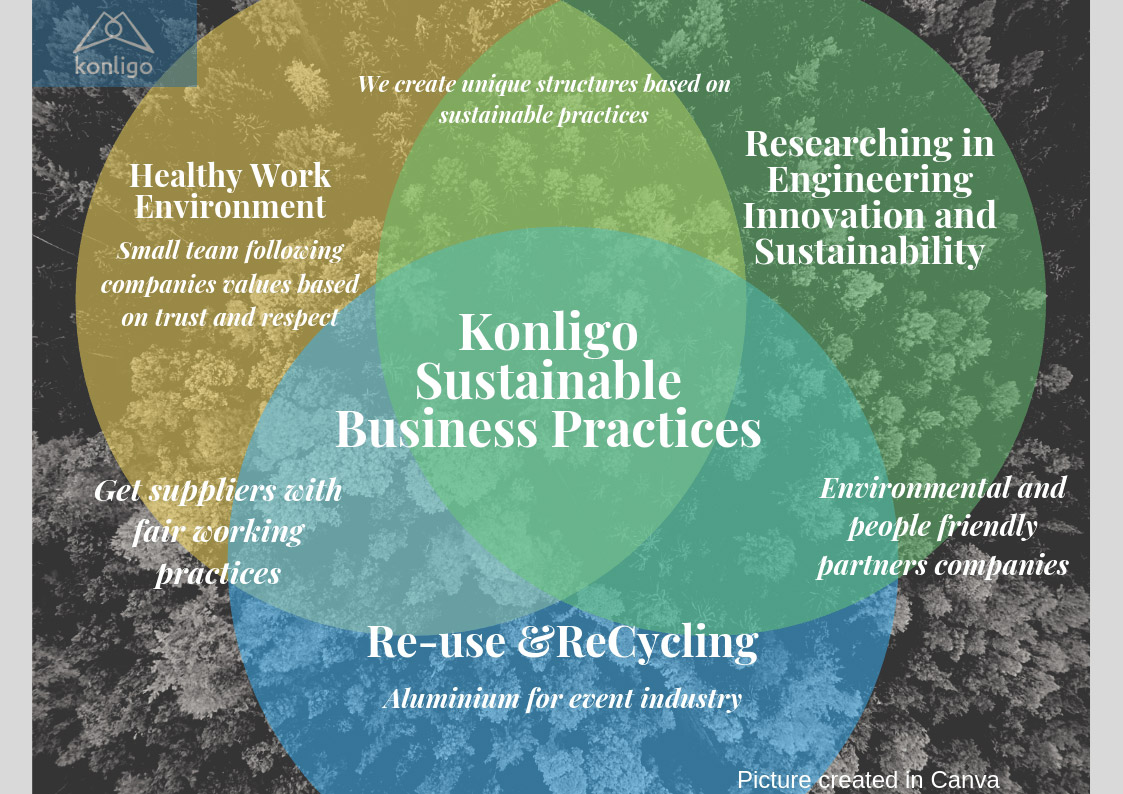
A sustainable business model?
If we start to think about it and look back at how business life has enormously evolved during the last two centuries, who would have thought that industrialization and its practices would get a bad image, and posteriorly the resulting consumerism and waste (like plastic o.a.) must find an end.
Industrialization helped in making our lives easier by increasing our agriculture production and feeding the fast-growing population. People were moving to the cities because men working in the fields were no longer needed. Then, plastic was created and its use increased extremely fast, easily becoming the replacement of other materials due to its ephemeral value.
At that time, people only saw short-term benefits and how life was becoming more practical and easier. Not only private daily life, but also businesses didn’t miss the opportunity to spread and use industrialized technologies and products.
People started to consume indiscriminately and consequently getting rid of stuff as they used it.
Looking towards change
Nowadays we are heading towards developing a long-term vision regarding our planet’s resources. We try to solve the problem before we create it. Indeed we cannot hide our problems on waste islands abandoned in the middle of the sea or dig it deep enough in the ground. Ideas are rapidly transforming as effective solutions: recycling? circular economy?
People are realizing the mess mankind has made and is still making. But actions are starting to rise and finally we can agree that sustainability is the new necessary trend, also in today’s business life.
New ways of doing business
Many companies from all around the world, particularly right after the agreement of Agenda 2030 for sustainable development, have started to modify their business practices and greening up. In fact, many new companies, and especially start-ups are born inspired by this boom. Even multinationals are adopting in a way it is now expected from them.
Being sustainable, is it a long-term necessity or a temporary trend? At least many theoreticians agree upon it and support it globally. There are plenty of benefits linked to sustainability, such as tax reduction, a fact that can be quite interesting for many companies due to the immediate benefit that it will provide them.
As things will change there are many possibilities in improving the working atmosphere and workplaces. Getting sustainable supplies, water filters, plants and recycling in a proper way will have a positive effect on the working conditions and wellbeing of employees. But a step ahead – and maybe even a must - is creating jobs and companies or organizations fully based on the sustainability and circular economy concept.
The media’s role in shaping today’s business
As the media becomes more and more powerful, so does the public opinion as well. Because of this, many companies try to catch people’s attention by proudly showing off with their “greenness”. Everything can be highlighted: using recycled materials, non-testing on animals, giving up plastic and so on. This is actually a positive side effect of a sustainable business model, but sustainability cannot be addressed only for marketing purposes and we all should be careful about misleading greenwashing activities.
Konligo’s mindset regarding sustainability
When it comes down to launching in an entrepreneurial adventure and you are looking for a plan, it’s important that your vision must be linked to what’s important to you and what the world – today and in the future – needs. Many people agree: doing business is all about generating and seizing opportunities. Konligo saw an opportunity to promote its innovative technology in the event industry due to the huge amount of waste generation. In addition to this, while Konligo’s team is growing, people are being carefully selected not only by choosing professionals and experts but also for their particular mindset and values regarding sustainability and environmental issues.
The circular economy concept is a business model reference at Konligo. Circularity reminds us that with every purchase comes a certain reaction and consequence in nature. Every natural cycle has a beginning and renewal ending (from cradle to cradle), but is this really happening with the majority of the products that we own or buy? Not yet! Most of those have a linear cycle (from cradle to grave): after being produced and used – generally in a short lifespan - they end up on the waste pile, polluting our grounds, water, and oceans.
At Konligo, we certainly believe that the model of circular economy should be adopted for many if not all. We aspire to reach sustainable expertise and develop a consequent image through designing structures from recycled materials, giving them a circular life where they can become functional again.
Waarom is het 115x interessanter om in startups te investeren dan je geld op een spaarboek te houden?
Dankzij de hervorming van de Tax Shelter in 2014 geeft België een enorme fiscale stimulus aan mensen zoals jij en ik om iets meer te doen met ons geld dan het spijzen van een spaarboek. In plaats van een spaarboekwinst van 126€ over 5 jaar kan je nu een winst van maar liefst 14.500€ boeken.
Spaarboekjes brengen niets op
Je hebt deze discussie wellicht al gehad met vrienden: “mijn spaarboek brengt echt niets op”, “door de inflatie heb ik het gevoel dat mijn spaargeld minder en minder waard is”, “ik zou beter mijn geld investeren in iets dat een beetje geld opbrengt”. Wel dankzij Tax Shelter kan je geld je nu degelijk iets bijbrengen en het risico is voor 45% gedekt!
We nemen een voorbeeld dat jij 10.000€ op je spaarrekening hebt staan bij een klassieke bank en je wil na 5 jaar je “belegging” evalueren. We nemen voor het gemak 0,25%* interesten. Na jaar 1 krijg je 25€ aan intresten op de 10.000€, na jaar 2 krijg je 25,06€ op 10.025€, etc. Na 5 jaar heb jij 125.62€ interesten of een “winst” van 1.26%.... Droevig niet waar?
Je risico om in een start-up te investeren wordt voor 45% gedekt!

Nu wordt het een ander verhaal als je beslist om die 10.000€ te investeren in een startup via aandelenparticipatie.
Stel je investeert in november 2019, dan krijg je IN ELK GEVAL 45% terug van de belasting. Dat wil zeggen dat je in november 2020 al zeker 4.500€ terugkrijgt, ongeacht de situatie van de startup waarin je investeert (**).
Daarna is het zo dat je de eerstkomende 5 jaren geen dividenden mag verwachten. Gezien het gaat op een opstartend bedrijf is het zelfs veilig hier gewoon niet op te hopen. Wat je echter wel hebt is wat we de “exit” noemen: na 5 à 7 jaren kan je meestal je aandelen terug verkopen en in het meest plausibele geval heeft het bedrijf in die tijd zijn marktpotentieel verdubbeld (dat kan tot x10 gaan maar laten we conservatief zijn). Gemakkelijk verwoord wil dat zeggen dat je de aandelen van 10.000€ aan 20.000€ kan verkopen. In 5 jaar tijd heb jij dus een winst gemaakt van 14.500€ of 145% van je initieel kapitaal.
Stel dat de valorisatie van het bedrijf of het marktpotentieel in die tijd niet verandert - wat niet waarschijnlijk is aangezien een startup verwacht wordt te groeien in zijn eerste jaren - dan nog zijn je aandelen 10.000€ waard. Je winst is dan het fiscaal voordeel waarvan je genoten hebt, dus 4.500€ of 45%.
Let op, dergelijke investering is met hoog risico. Dit wil zeggen dat er een kans is dat de startup failliet gaat en dan ben jij wel je geld kwijt, maar door de Taks Shelter ben je 5.500€ verloren in plaats van de initiële 10.000€.
Samengevat in een tabel:

Investeer met impact!
Het is dus zeker financieel interessant om (een deel) van je spaargeld - dat je een 7-tal jaar kan missen – in startups te investeren: afhankelijk van het bedrijf kan je een rendement van 145% halen of meer, wat 115 x beter is dan de miezerige 1.26% van je spaarboek. Bovendien kan je hierdoor ook de Belgische ondernemers en economie ondersteunen. Vind je het belangrijk dat je geld ook een positieve impact heeft op de maatschappij, dan heb je platforms zoals Lita.co waar de crowdfunding gebeurt voor verschillende duurzame startups. Onze start-up Konligo zit er bijvoorbeeld tussen en je kan al met een beginbedrag van 1.000€ (en dus eigenlijk 550€) investeren!
Investeer niet in gelijke welke start-up
Het is wel belangrijk om niet in gelijk welke startup te investeren. Dit zijn een aantal aandachtspunten om rekening mee te houden:
- Analyseer een beetje de markt waarin de startup zit en hun product(en). Is het een markt met potentieel en is het product innoverend genoeg?
- Wat is hun financieel plan? Verwachten ze na 5 jaar hun valorisatiewaarde te verdubbelen of te vervijfvoudigen? Is dit haalbaar t.o.v. wat ze tot nu toe hebben gerealiseerd?
- De bovenstaande puntjes blijven speculaties. Op zich kan jij (niemand eigenlijk) dit nooit exact nagaan, en dit maakt juist een investeringskeuze moeilijk en risicovol. Wat niet berust op speculaties en je wel goed kan analyseren is het drijvende team mensen. Dit blijft het belangrijkste element in elke startup. Is het een hechte groep dat volledig achter hun visie en missie staan en dezelfde kernwaarden delen? Heeft het kernteam al samengewerkt (in dit project of in andere)? Zijn ze complementair om diverse uitdagingen aan te kunnen? Zijn ze bereid om risico’s te nemen en het belang van de startup boven hun eigen belang te zetten ?
Heb je nog vragen hebben over crowdfunding? Raadpleeg dan deze interessante link.
Aarzel niet langer en neem de toekomst van je geld in eigen handen, want je kan er zeker impact mee creëren.
(*) BNP, KBC, ING, Belfius: de totale interesten op hun spaarrekeningen liggen tussen de 0.11 en 0.22%
(**) Het is correcter om te zeggen dat je geniet van een belastingsvermindering van 4.500€ van het huidig fiscaal jaar.
Get connected, it’s all about Konligo (artikel in het Engels)
From idea to action
After several years of research on lightweight and transformable structures at the Vrije Universiteit Brussel, Konligo is born to shape all this knowledge and apply it in market-fit plan based on circular economy.
Konligo is created to become a revolutionary company that aims to shake up the event industry with its business model that uses divergent thinking offering innovative and sustainable solutions. At Konligo, we believe that great projects deserve responsible practices and we’re here to offer them.
A solid foundation is what every company must aspire, in order to scale-up and grow successfully. That’s why we’ve put a lot of effort in having a clear mission and we devote a lot of time to team communication and to build strong customer relationships
Reaching goals together
On the path of success - which for every organisation might be defined differently - a company must set down a list of core values and define its mission statement. At Konligo, we actively share those and apply them in our everyday work. All team members know what we believe in as a company and what achievements are possible by working at Konligo. By doing this, we not only communicate what we do, but it also manifests our personal purposes and desires within a strong connected team. This all brings oxygen to our company.
There are no wrong answers, just new lessons
To reach our goals, Konligo constantly seeks improvement by embracing an innovative corporate culture where all insights and opinions are welcomed. Everything can be discussed in a communicative space of trust and transparency where there are no wrong answers — just new lessons.
We share a dynamic and comfortable atmosphere which is built carefully by selecting the right people. Konligo chooses not just the most suitable professionals for each existing role, but in addition to this, team players with positive and respectful mindsets — engaged persons who nicely fit the company’s culture and the rest of the team.
Re-inventing the event industry
Our purpose is to reach recognition as innovators in the field of sustainability. We believe that today’s businesses can mold our lives with even greater importance than before. With a sustainable mindset many contemporary issues can be addressed with the right solutions, building a better future.
It starts to get widely known that building a structure gives rise to tons of end-of-life issues and the problem is that not many companies actually care about it. The most problematic one is the use of toxic materials, generating huge amounts of waste difficult to reuse or recycle. We select our suppliers carefully in order to make sure that we do things sustainably.
Connection is what define us
As a result of everything we believe in and do, our company was named Konligo. It represents perfectly our way of working, the products and solutions we offer and moreover our relation to each other.
Konligo is derived from Esperanto meaning ‘connection’, and being a word from this special language, it reflects our universal point of view on the world and society.
Connection is what defines Konligo. Our deployable structures need strong connections to be supported, settled and balanced, and our team does too in the same way. Beyond our professional relationship we are also friends and celebrate success together.
Get connected and get to know us better — here it’s all about Konligo!
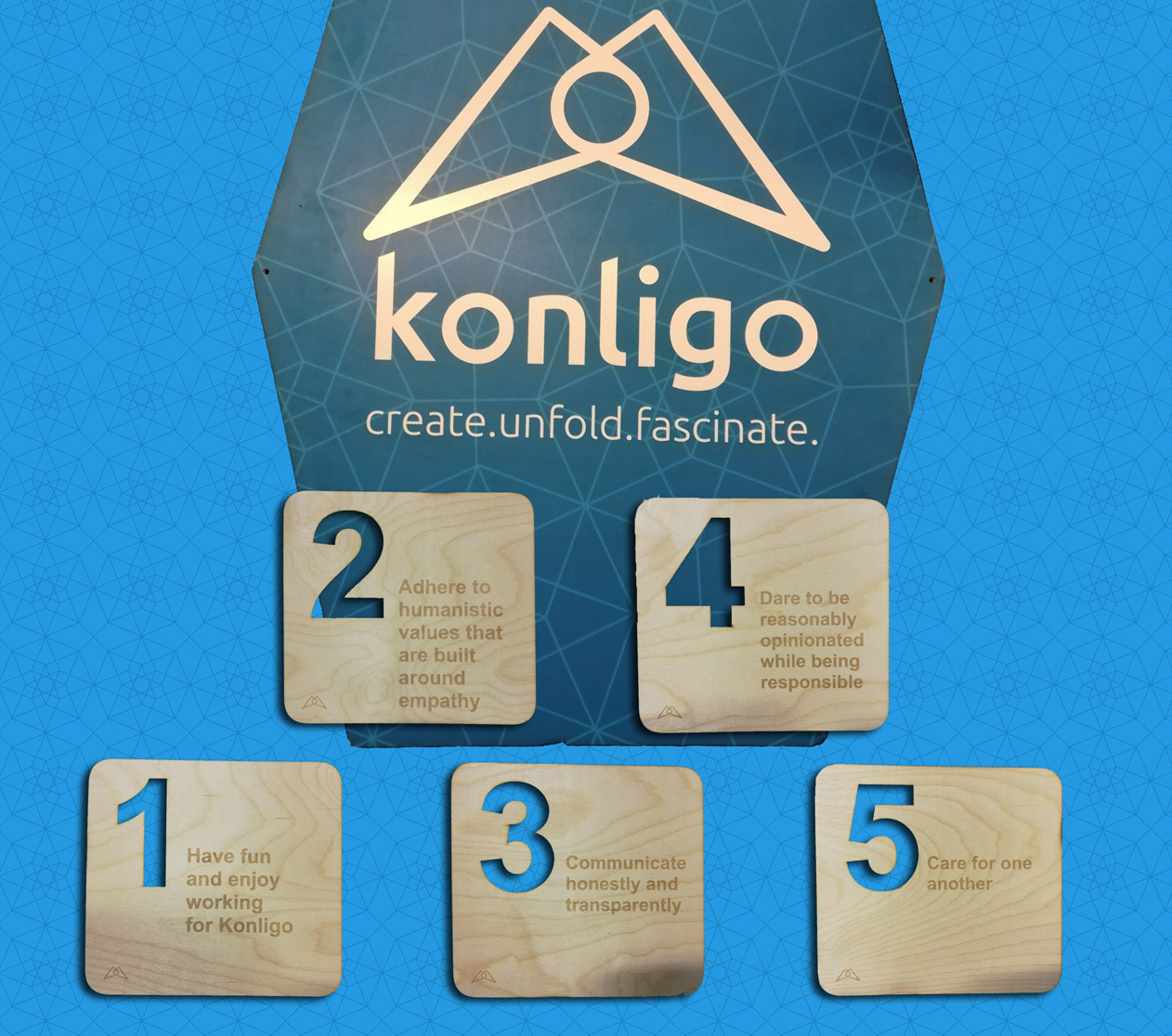
Atelier 03 wordt onze nieuwe partner voor production design and light art (artikel in het Engels)
Atelier 03, the collective founded by Matti Degueldre and Bram Lenaerts arose from the need to provide portable solutions for the event industry. Matti got his experience as a lightdesigner and scenographer for Nachtcollectief and Bram, who is more organization-orientated, hosts a nightlife and open air- concept ‘Transit’.
Atelier 03 acknowledges location as a key-factor for organizing a successful event. Due to regulations and gentrification the landscape for organizing events is rigid. Therefore, they developed Bakbeats. Bakbeats is a bike with personality. Housing a high power projector, a sound system, and a battery pack, it is a completely mobile event device.
Allowing to organise an event anywhere at any time.
Since then Atelier 03 expanded their solutions to mobile shelters, plug-and-play structures and wireless techniques, all the while focusing on short production timeframes and a minimal waste impact on the environment. To achieve these goals Atelier 03 collaborates with various partners, including Konligo.
During Ampere Open-Air, Atelier 03 successfully customized the Fastival into a stage for Boiler Room, the famous streaming platform for electronic music. Using a wireless light system and highly transparent corrugated sheets, Atelier 03 created an intimate stage that blended perfectly with the surrounding nature.
Visit www.atelier03.be and follow their instagram page atelier.03 for more information.
Luno (enkel in het Engels)
It all begins with an idea. We received a demand from a customer, Atelier 03, who wanted a new original pop-up cinema that could also be used as a medium for artworks such as a fresco. Creativity is our main resource and our software is a unique tool resulting from many years of research and several PhDs that allow us to model an infinite number of shapes from scissor beams made of recycled aluminium. Thus, the idea of Luno was established: evolving according to its position between a flat screen and a curved screen, in the same way a moon changes its shape as nights go by.
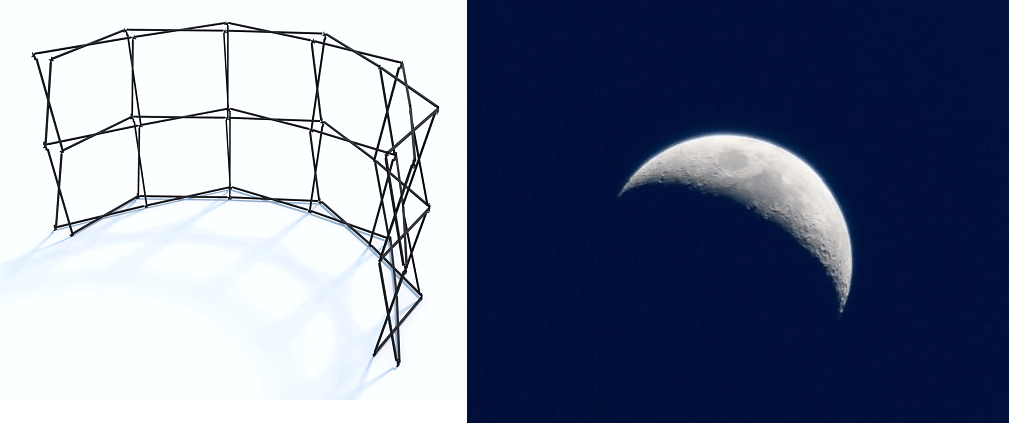
After several months of hard work on product development including conception and calculations, we arrived at the most iconic step for a start-up: the workshop. We all gathered at our workshop, under the capricious lights, exposed to the chilly winds during the winter season to screw, unscrew, punch holes, and assemble all the small and big pieces to form a beautiful aluminium puzzle. We then had to adapt new dimensions for horizontal deployment, a novelty in our products since our products were only able to be deployed vertically until now. This breakthrough in our new product considerably altered the impact of gravity, posing an uncertainty of whether the structure would work perfectly or if it would be as beautiful and eye-catching as we hoped.
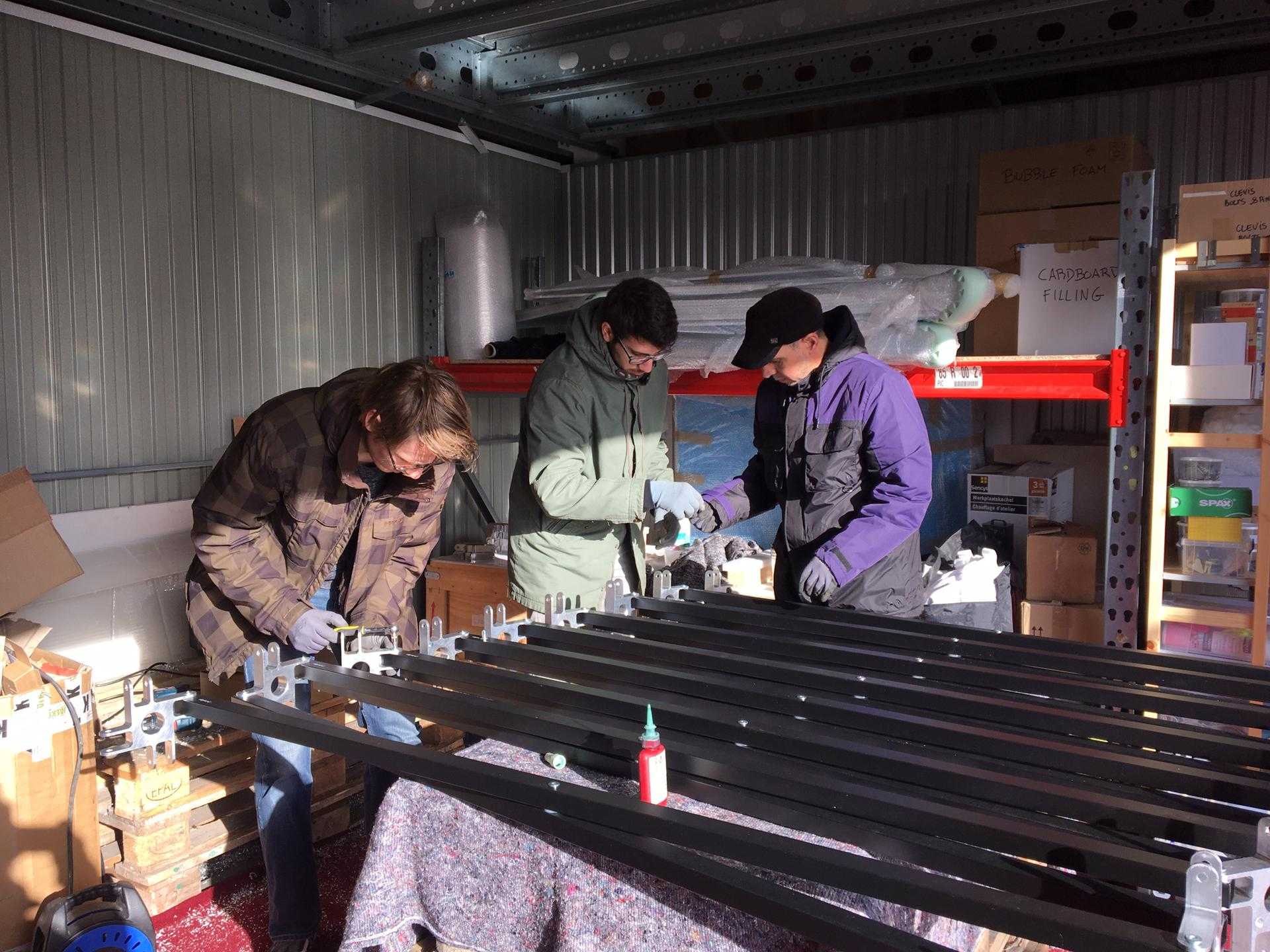
We do our best, but there are times when bad surprises occur. However, it wasn’t the case this time. We forgot about all the worries that had crossed our minds when we unfolded the structure for the first time. Seven months after the first brainstorming, these were the first steps of the aluminium animal we raised. Now we will observe the impact of the Luno, hoping that, for once again, the Konligo magic will take place and gather people.
